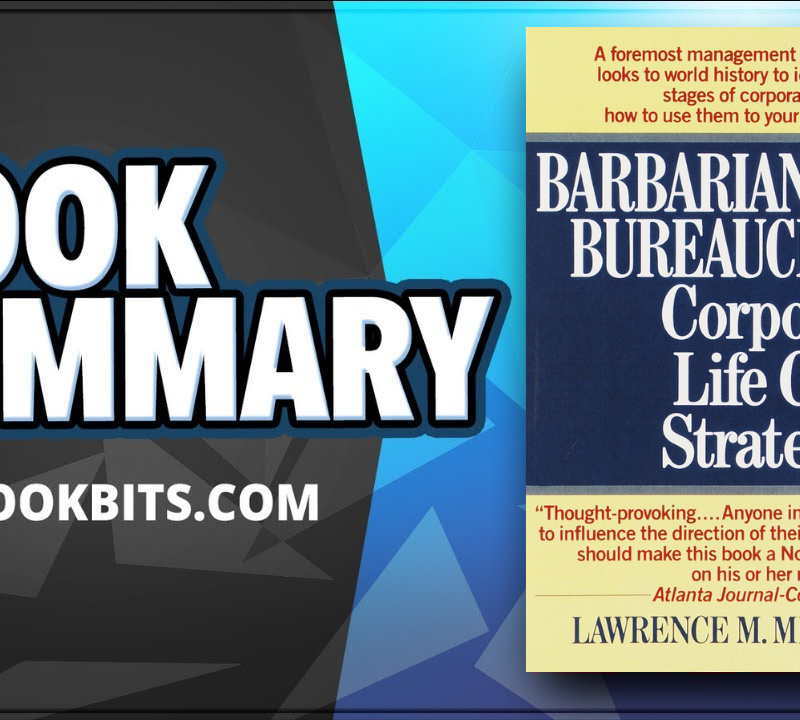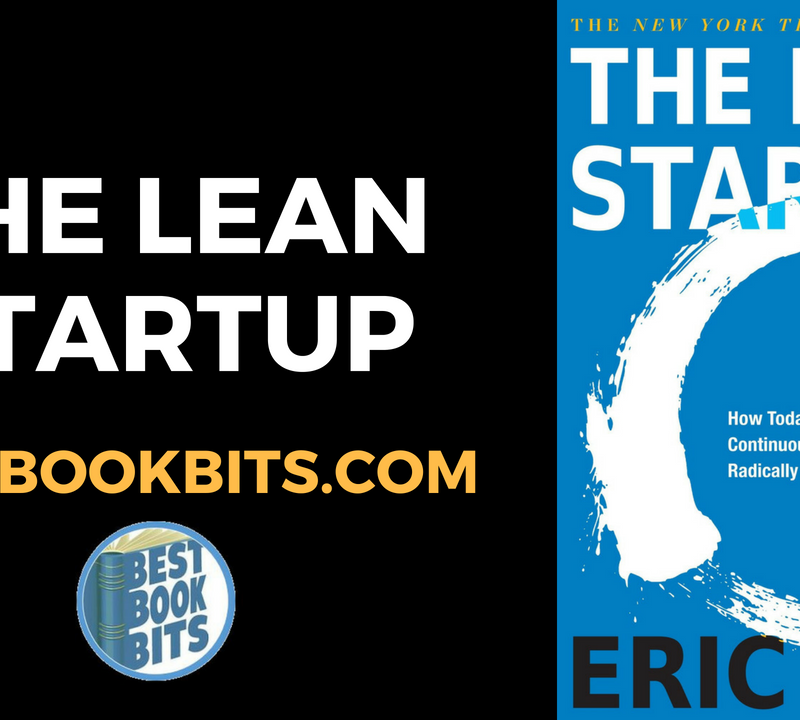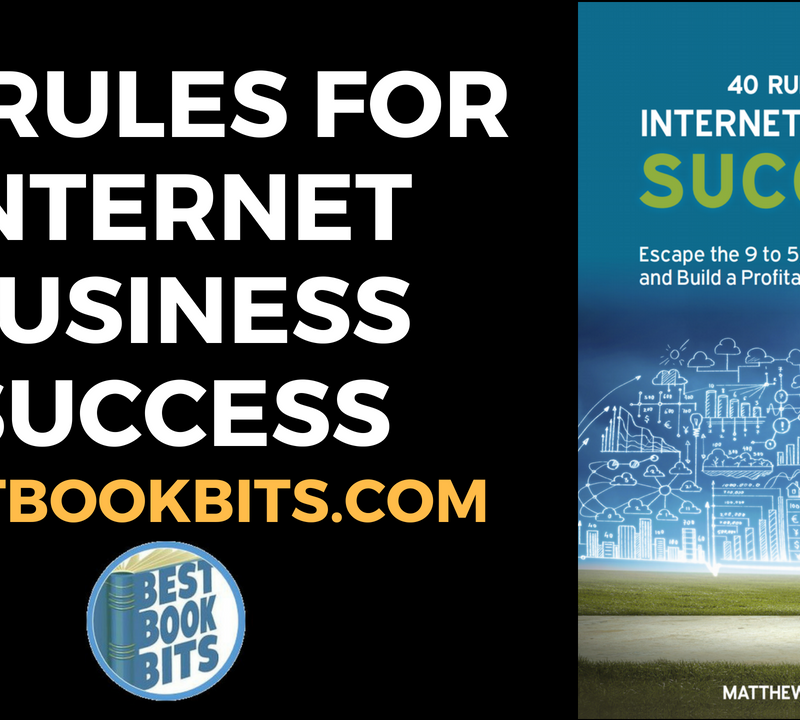JOIN THE ‘BEST BOOK CLUB’ NOW HERE
DOWNLOAD THIS FREE PDF SUMMARY HERE
STOP TRYING TO ACHIEVE YOUR GOALS BY YOURSELF AND BE COACHED TODAY HERE
CHECK OUT THE FOLLOWING Book | Summaries | Course | YouTube |Spotify | Instagram | Facebook | Newsletter | Website
Start Finishing How to Go from Idea to Done by Charlie Gilkey
A prominent productivity expert shows how to do more of the work that matters by converting ideas into finished projects.
Though we’ve created more productivity tools and strategies than ever, many people are frustrated that they’re not making progress on what’s most important to them. We’re to-do list ninjas, knocking off task after task but doing less of what really matters.
With Start Finishing, Gilkey presents a systematic, root-cause approach for overcoming the real pitfalls to productivity and turning your ideas into finished projects. He outlines a powerful seven-step method for success ― including identifying your genius, building a success pack of supporters, navigating multiple projects, and using each completed step to create momentum that propels you toward your larger goals. With deep insight and clarity ― and contributions from Seth Godin, Susan Piver, Jonathan Fields, and more ― Gilkey provides an invaluable set of tools to help you stop being bogged down with task lists and start finishing your best work.
CLEARING THE DECKS FOR YOUR BEST WORK
“Someday” Can Be Today
People love to share their ideas. But more often than not, they never act upon them.
The reality is, we don’t do ideas — we do projects. A project is anything that requires time, energy, and attention to complete.
But why should we make our ideas a reality through projects?
Sages from Aristotle to the Dalai Lama have asserted that the goal of human action is to thrive. And we thrive by doing our best work.
Your best work could be raising your kids, a side business or starting a full-time business, working with a nonprofit, volunteering at your church, coaching Little League, or mentoring teenagers. It could even be a hobby.
Your best work makes the world and your life more meaningful.
And we can create new realities for ourselves today.
GETTING TO YOUR BEST WORK
Imagine your life as if it were two slices of bread. Your vision, mission, purpose, and big goals compose the top slice of bread; your day-to-day reality is the bottom slice of bread.
For many people, there’s a big gap between the two, leading to an air sandwich.
The air in this sandwich is filled by 5 challenges that keep you from doing your best work:
- Competing priorities – “Action expresses priority”;
- Head trash – General aspersions, self-limiting stories, and personal experiences, histories, and contexts, usually rooted in our childhood;
- No realistic plan – self-explanatory;
- Too few resources – “Do what you can, with what you’ve got, where you are”; and
- Poor team alignment – we’re not communicating to our team what we want, need, and dream to be.
There are 5 keys to doing your best work:
- Intention – Start with why, begin with the end in mind, and consider where you want your life to be in three years;
- Awareness – Know what your best work is and notice how your emotions and presence shift when you’re doing your best work;
- Boundaries – Positive boundaries are creating space for something and negative boundaries are creating space from something.
- Courage – Courageous action can build talent, but fear keeps us stuck in the confines of yesterday; and
- Discipline – It channels our energy into purposeful, constructive action, while a lack of discipline diffuses our energy into destructive outlets.
The 5 keys are practices that can be cultivated, and we’re often well-cultivated in some but not in others.
JOIN THE ‘BEST BOOK CLUB’ NOW HERE
DOWNLOAD THIS FREE PDF SUMMARY HERE
STOP TRYING TO ACHIEVE YOUR GOALS BY YOURSELF AND BE COACHED TODAY HERE
CHECK OUT THE FOLLOWING Book | Summaries | Course | YouTube |Spotify | Instagram | Facebook | Newsletter | Website
PICK AN IDEA THAT MATTERS TO YOU
It’s time to embrace the thrashing you’re doing. The more something matters to you, the more you’ll thrash, precisely because its success or failure is deeply important to you.
However, not doing your best work leads to creative constipation — at a certain point, you’ll be too toxic to take new ideas in because you’re not getting them out. Don’t be discouraged, though.
First of all, we are made to slay dragons. We have survived for hundreds of thousands of years using our creativity, grit, imagination, and cooperative spirit.
Secondly, we’re resilient, adaptable, ingenious, and triumphant. Dragons aren’t a signal that we’re on the wrong road but rather that we’re on the right road.
Finally, the gift of failure is that it reveals what matters to you, shows you when you’re out of alignment, and reveals a growth edge.
Simply let go of projects and ideas that aren’t allowing you to thrive, so you can trade up to the projects that do. This is what the author calls ‘displacement’: the fact that doing something now excludes doing anything else.
It can help you focus on what matters, but only after you accept the limitations of time and energy.
PLANNING YOUR PROJECT
Convert Your Idea Into A Project
Now that you’ve chosen an idea that matters, you’re much closer to doing your best work.
Consider the following two formulations of the same goal:
- Book
- Complete a book on the history of cappuccino by the end of 2019
Which of the two are more likely to get done? Probably the second one, because it’s a SMART goal. A SMART goal is simple, meaningful, actionable, realistic, and trackable. Now, let’s talk about the different types of success.
Consider the fuzzy goal of running a marathon. Finishing the marathon, which could include walking parts of it and finishing before the event ends, could be classified as small success.
A moderate success might be running the whole way. An epic success might be winning your category.
The three levels of success — small, moderate, and epic — require a corresponding amount of effort and focus, and you can’t do everything at the epic level.
Remember: what other people achieve is irrelevant to where you are and what level of success makes the most sense for you.
Finally, if a project doesn’t have a start and completion date, it’s not likely that it’s going to get done.
Consider “We should hang out soon!” vs. “Would you like to get drinks Friday evening?” The gift of dating items is that it helps us get real with displacement, and displacement channels our energy and attention.
MAKE SPACE FOR YOUR PROJECT
To start doing your best work, create space for a specific project and build from there.
Chunking (splitting projects into coherent, doable parts), linking (joining chunks together so that they hang together), and sequencing (linking chunks together into a logical order in space and time) are the key skills that will help you create space and build plans that work.
A chunk of work that can be done in 15 minutes is a task and a chunk that can be done in 2 hours is a block. (Try it. Think about an item on today’s to-do list. Does it seem like it’s going to be a fifteen-minute task (or two) or a two-hour block?)
When we articulate chunks as verb-noun constructs, we see that the verb gives us an idea of the size of the work. Here are some conventional verbs as well as what size of a chunk they relate to:
- Quarter- or month-sized project verbs: Rework – Develop – Strategise – Launch/Ship – Build – Publish (books, articles) – Kick off – Move/Relocate
- Week-sized project verbs: – Research – Decide on – Collaborate with – Create – Plan – Design – Analyze/evaluate – Coordinate – Promote – Edit – Apply
- Task verbs (for work that can be done in fifteen minutes): – Email – Call – Sort – Read – Send – Check – Review – Find – Compile – Schedule – Make – Text – Print
These verbs help us better understand how projects are chunked, linked, and sequenced, and how some chunks will naturally go with others, while some chunks go in others.
Mastering quarter-sized projects is the secret sauce of doing your best work.
The author’s Five Project Rule is shorthand for “no more than five active projects per timescale” and helps prioritise and plan projects.
The weekly perspective is the longest level of perspective that people feel comfortable shaping and planning. At the weekly perspective, there are four basic blocks that we can build into our days:
- Focus blocks. 90–120-minute blocks of time when we’re especially creative, inspired, and able to do high-level work that requires focus.
- Social blocks. 90–120-minute blocks of time when we’re primed and energetically in the right space to meet other people.
- Admin blocks. 30–60-minute lower-energy blocks of time when we’re not in the zone to do the work that requires heavy lifting but there are still other types of work we can do effectively.
- Recovery blocks. Variable-length blocks of time that we use for activities that recharge us, such as exercise, meditation, self-care, and intentional idling.
Three focus blocks per week per best-work project helps you maintain momentum, efficiency, and focus.
Now, you know you’re not going to find the time somewhere for your best work; you have to make the time for your best work.
When you use the Five Projects Rule and weekly block planning, you end up with defaults and constraints that aid your planning and prioritisation.
JOIN THE ‘BEST BOOK CLUB’ NOW HERE
DOWNLOAD THIS FREE PDF SUMMARY HERE
STOP TRYING TO ACHIEVE YOUR GOALS BY YOURSELF AND BE COACHED TODAY HERE
CHECK OUT THE FOLLOWING Book | Summaries | Course | YouTube |Spotify | Instagram | Facebook | Newsletter | Website
BUILD YOUR PROJECT ROAD MAP
A project road map is a project plan that places chunks of a project on a timeline.
Playing to your strengths makes the project easier to do, and you’ll find flow more often when you’re using your strengths. Build projects from your GATES — genius, affinities, talents, expertise, and strengths.
Then, create a budget for your project to avoid snags and stall-outs. Even when a project doesn’t require money, funding a project can make it better.
Use deadlines to guide your project, but remember that it’s your capacity that drives your project no matter what the deadline is.
Finally, when you’re working with collaborators — and almost all best work projects have collaborators — make sure to build relay time into your road map.
As you work through building your road map, write in pencil and embrace the mistakes you’re going to make.
KEEP FLYING BY ACCOUNTING FOR DRAG POINTS
Drag points are the natural places where reality will push against your plans.
For example, we often choose mediocrity (in the short term) because we don’t want to succeed due to the no-win scenarios (the Success Will Wreck My Relationships tale, the Success Versus Virtue myth, and the What If I Can’t Do It Again? trap), but we also don’t want to fail — mediocrity is the space between success and failure.
Or we let derailers & naysayers drag us down: derailers are well-meaning people whose “help” and “feedback” throw you off course, and naysayers are people who are actively against you and your project.
To identify and avoid the challenges that may kill or slow your projects, use project pre-mortems: the process of considering all the ways that a project might go south so you can actively work to prevent those things.
Use the following questions to do your project premortem:
- Have you created any no-win scenarios for yourself? How might you detangle them?
- Have you picked a method of doing your project that’s especially hard for you? How might you start from and leverage your GATES?
- Are there any derailers and (real) naysayers you need to account for? List them by name and how you’ll address them.
- Are you carrying any projects that you can let go of to keep them from bogging you down?
- Are there any bad or unhelpful stories you’re telling yourself — you’re a flake, you’re not good at planning, who are you to think you can do it, and others — and what will you do to counteract those stories?
WORKING YOUR PLAN
Weave Your Project Into Your Schedule
Make sure your environment helps you work focused on your projects.
The 7 environmental factors to make work for you are sound, smell, sunlight, clothing, clutter/organisation, amount of space, and music.
Batching and stacking are strategies that help you work more efficiently. Batching work is the process of doing similar kinds of work in a contiguous stretch of time; stacking work is the process of doing dissimilar but compatible kinds of work in the same stretch of time.
A few easy examples of task stacking are:
- Doing laundry while listening to an audiobook
- Doing an audio or real-time meeting while hiking
- Exercising in the park while spending time with the kids
Frogs are the tasks and chunks of projects that we really don’t want to do (e.g. paying a bill, even though we have the money to pay, or responding to an email that might take three minutes to do, if we’d just make up our mind and do it.)
Addressing them more frequently helps keep the dread-to-work ratio lower.
For more productive output, put the work that requires the most effort — decisions, analysis and evaluation, and deep work — on the days when you have the most creative, positive energy. Those days should also have the most focus blocks.
In terms of planning, here’s what tends to work well for people:
- Daily planning — the night before or the first thing in the morning before checking email. This can typically be done in less than fifteen minutes.
- Weekly planning — Sunday night or first thing Monday morning before checking email. This can typically be done in less than thirty minutes.
- Monthly planning — the weekend before the month starts or the first Monday of the month. This may require a focus block if you haven’t been doing your weekly momentum planning.
- Quarterly planning — the week before the quarter starts. Quarterly planning often takes multiple passes if you haven’t been doing your monthly momentum planning.
- Annual planning — the month before the year starts. Annual planning may take multiple passes.
BUILD DAILY MOMENTUM
Celebrating the small wins of progress enables us to celebrate big finishes.
To boost daily momentum, create habits and routines that minimise decision fatigue and create longer periods of flow.
Leaving crumb trails for projects (e.g. leaving a quick note to yourself about where to pick up) makes getting back into projects more enjoyable and efficient.
Interruptions are external diversions that keep us from doing our best work; distractions are internal diversions that we allow ourselves to do. Minimise them to build momentum.
Other ways that can sabotage your momentum are project cascades (when a project falling behind makes others fall behind); project logjams (when you have too many concurrent projects); and tarpits (when a stuck project gets more stuck the longer it stays stuck.) Make sure you’re aware of them and deal with them swiftly.
The creative red zone is the last stretch of the project where the closer you get to the finish line, the harder it is to cross the finish line. To get through it, return often to the why of the project.
FINISH STRONG
Finishing a best-work project unlocks new realities. After-action reviews make every project a learning experience at the same time that they set you up for greater success in future projects.
The more a project matters to you, the greater the need for downtime and transition time after finishing it.
Give yourself CAT (clean up, archive, and trash) time to make the next project easier to do.
CONCLUSION
Key takeaways
- We thrive by doing our best work.
- The more something matters to you, the more you’ll thrash, precisely because its success or failure is deeply important to you.
- You have to let go of projects and ideas that aren’t allowing you to thrive so you can trade up to the projects that do.
- Project without start & completion dates are unlikely to get done.
- Create space for your best work and build from there.
- Three focus blocks per week per best-work project helps you maintain momentum, efficiency, and focus.
- Project premortems help identify and avoid the challenges that may kill or slow your projects.
- After-action reviews make every project a learning experience at the same time that they set you up for greater success in future projects.
JOIN THE ‘BEST BOOK CLUB’ NOW HERE
DOWNLOAD THIS FREE PDF SUMMARY HERE
STOP TRYING TO ACHIEVE YOUR GOALS BY YOURSELF AND BE COACHED TODAY HERE
CHECK OUT THE FOLLOWING Book | Summaries | Course | YouTube |Spotify | Instagram | Facebook | Newsletter | Website












